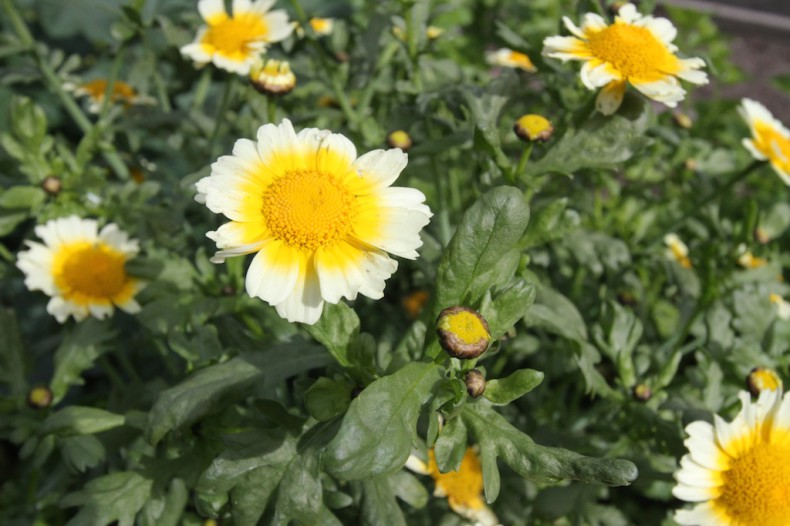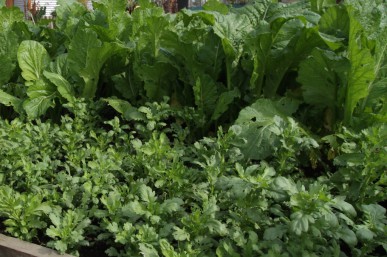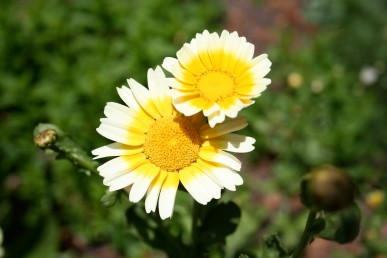By Penny Woodward
I was leafing through the book I wrote with Pam Vardy, Community Gardens: A Celebration of the People, Recipes and Plants because I had been thinking about refugees and immigrants and how much they have enhanced our lives. Since the new government has been in power (and to some extent the previous government) the rhetoric has again resembled that of the Howard government and the Tampa. It was the events surrounding Tampa that prompted Pam and myself to get together and combine our skills (hers in interviewing and cooking, and mine in gardening and writing) to produce a book that showcases just a few of the very many ways that people from other cultures and countries have added to our lives and lifestyles in Australia. To highlight this, I thought that from time to time by writing about plants that are in the book, I would focus on unusual individual plants that we would not otherwise have available for our gardens or meals.
Shungiku (Glebionis coronaria) is also known as garland chrysanthemum, edible chrysanthemum, vegetable chrysanthemum, chop suey greens and Japanese greens. It comes originally from the Mediterranean, parts of Europe and northern Asia, but is now widely grown and naturalised in the cooler highland tropical regions of South-East Asia, China and Japan.
This chrysanthemum is an annual that grows initially from a single, tender, round stalk with finely-cut, green leaves. If not harvested, the plants will grow to 1 m and develop daisy-like yellow flowers over a long period. The flowers are golden yellow in the centre and the pale creamy yellow on the outside. There are several cultivars that vary in leaf shape and size.
Shungiku grows well in temperate regions and in highland regions in the tropics. In tropical climates they can be grown in winter. Grow from seed sown in shallow trenches in early spring or autumn. They take about seven days to germinate. Thin plants to about 15 cm apart. Garland chrysanthemum grows best in a nutrient and humus-rich soil in full sun. Plants need to be watered regularly. Pick the first leaves about 30 days after sowing. Leaves are at their best when plants are young, as they become bitter as the plant ages, or in very hot weather. Remove the flower heads from most of the plants to encourage more leaf growth, but allow a couple to flower so the flowers can be picked and used. Garland chrysanthemums grow well in pots and can be regularly resown.
Eat the strongly aromatic leaves and stems as a vegetable. Steam, blanch or boil in a tiny amount of water and serve with a little soy sauce and sesame oil. Don’t over cook as this makes them bitter. In Japan, shungiku leaves are an important ingredient in one pot beef and fish dishes. If they are to be used on their own they are usually dipped briefly into boiling water and then plunged into cold water to maintain the green colour. In Korea, the leaves are used with strongly flavoured fish to neutralise the flavour and in China, they are added to soups and stir-fries. The Vietnamese use the leaves in chicken, pork and beef dishes and fried as a vegetable. Fresh young leaves are high in vitamin A and are an interesting ingredient in leafy salads. Sprouted seeds are also eaten in salads or as a snack. In Japan, the petals are used either fresh or dried in salads, with fish, and in soups and pickles.
Borrow Community Gardens from your library, buy it from you local bookshop or buy it online from my shop here.



